The sight of alligators on Florida golf courses will be familiar to avid golf watchers, the native fauna distinctive to the estate.
The aim of the Mount Juliet Estate ghillie (fishing guide), Dan O’Neill, is for international watchers to see Irish fauna – specifically pheasants – walking up the 18th when the Irish Open is played for the second year running at the Kilkenny venue in July.
“As long as he doesn’t have a golf ball in his beak”; Dan laughs.
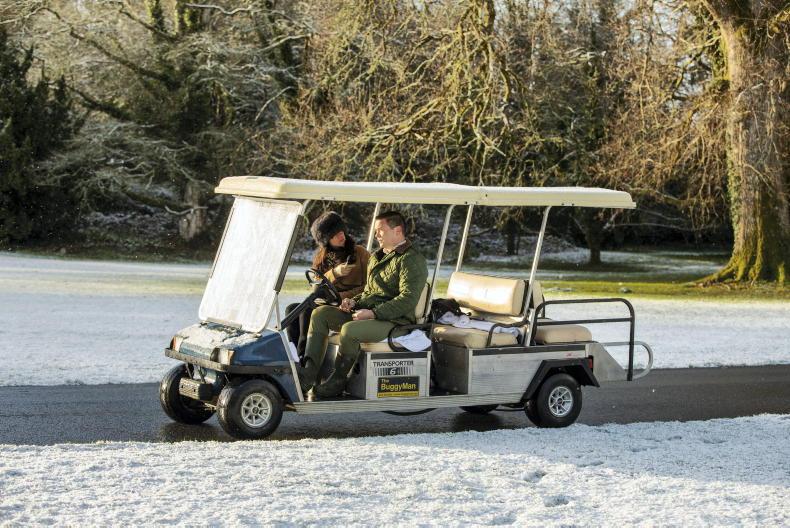
Golf cart is the only way to travel in the world renowned Mount Juliet Estate which will again host the 2022 Irish Open. \ Claire Nash
Dan O’Neill has been working in Mount Juliet since he was a teenager, starting out as a linen porter before becoming a ghillie on the river. Flight patterns, he explains, that work on the River Nore may not work on the River Barrow. And when someone doesn’t have any experience on a river, they hire a ghillie to assist them.

How he came to this role was quite by chance, he tells me: “When I was linen porter, I was coming up the stairs in the main house and someone had dropped a bloody butcher (a fly). This was the type of fly I caught my first trout on. So I brought it to Matt Bolger who was the fishing manager at the time. I told him it was a bloody butcher and I found it on the stairs and he asked me how I came to know what it was. I explained that I fished with my dad and two days later he asked would I be interested in guiding. I said, ‘Yeah, I’ll give it a go.’ So I went out and started guiding and now I’m here talking to you.”
An old oak tree on which an owl box is mounted is our first stop.

Dan O'Neill is spearheading the Mount Juliet rewilding programme \ Claire Nash
“Here on the outskirts of Walton’s Grove woods is the perfect location for the box as the owls use the woods and the paths for their circle. Some people put them inside the woods, but they’ll inhabit one quicker here. You can see them really early in the morning come around that path, hunting along the treeline,” Dan says.

Robins and other bird species are supported as part of the rewilding programme. \ Claire Nash
Reintroducing pheasants
Pheasants are a woodland bird and have always been in Mount Juliet, but Dan says that this is a conservation exercise and – although he is often asked – they are not starting to shoot again.
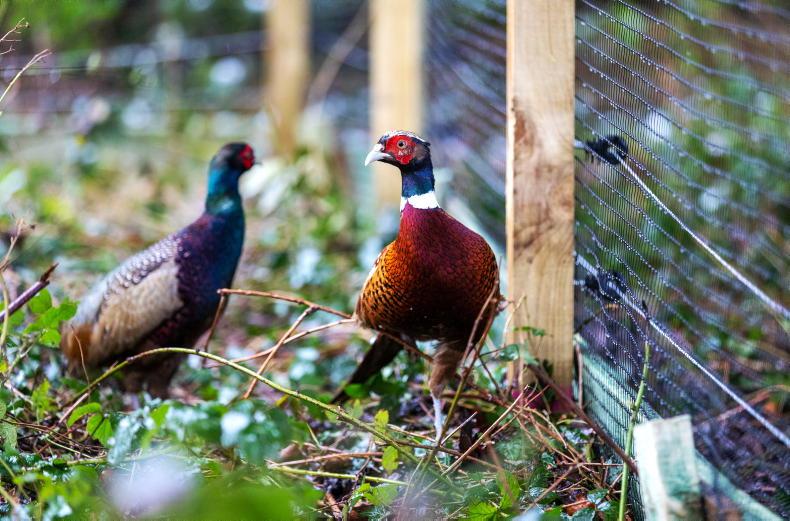
One hundred pheasants split over three pens in three different areas of the estate will be established in 2022, 80 hens and 20 cock pheasants. Dan explains that they will let the hens out first to establish themselves in the habitat and then the cocks should stick around. Hopefully down the line they will breed, he envisages. 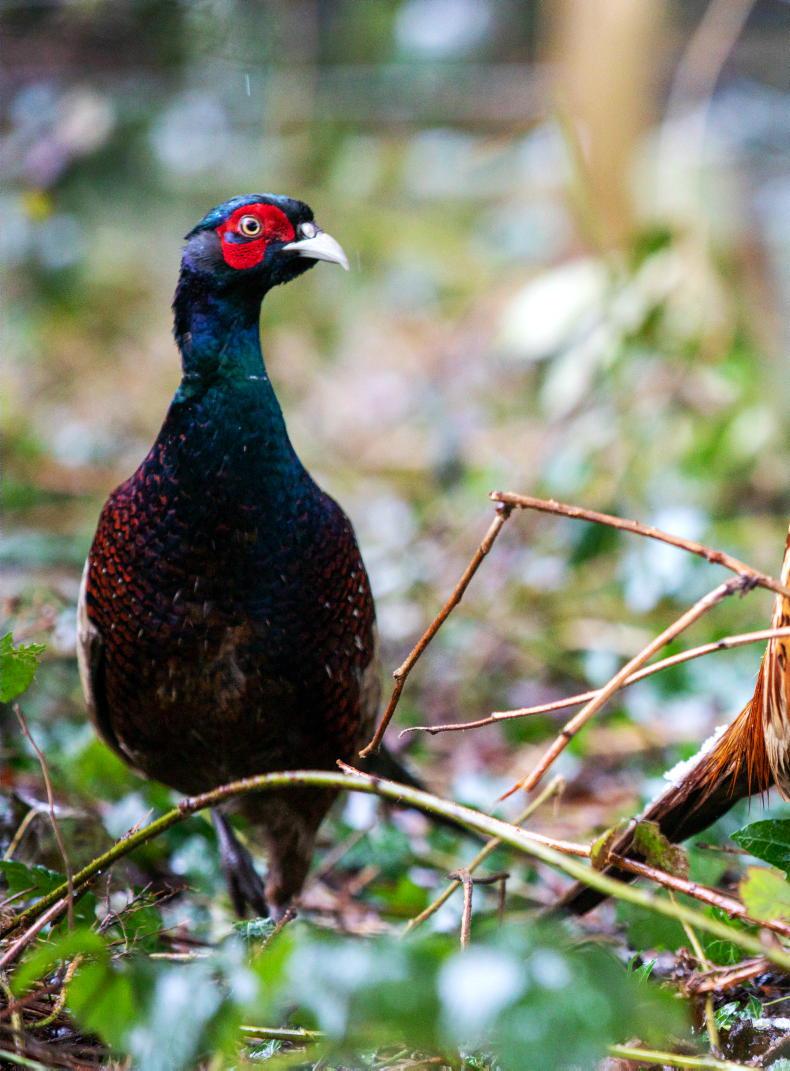
Dan tells us that the day before our visit, as he was feeding the pheasants a guest came down with his daughter. She saw pheasants for the first time and was absolutely fascinated by them, particularly the crowing, having never heard this sound before. The little girl returned four times before checking out.
For Dan, it is the children that are the real focus of this project. The estate has a kids club and he wants to get kids more involved with wildlife.
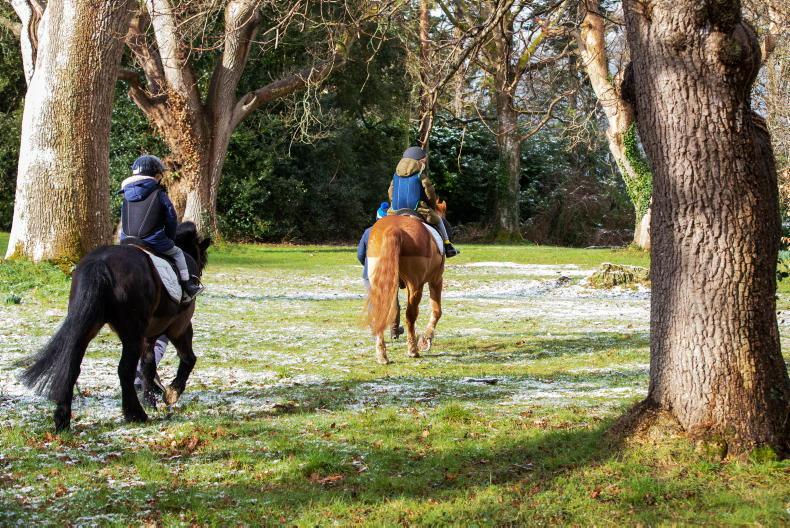
Young children ride through the Mount Juliet grounds. \ Claire Nash
“My plan is that the kids will make their own suet blocks with grain. We will go out and put them around the area. Not every kid lives in the countryside, so it’s nice to be able to give them the chance and a place to do that. When you plant a seed like that with a child, you never know where it is going to end up.”

The bird boxes have their GPS co-ordinates recorded as part of the programme. \ Claire Nash
Conservation
The estate has two and a half miles of fishing on the River Nore, famous for its brown trout.
“In minding that, we have to take into consideration the wildlife. We maintain the banks but we don’t manicure them too heavily, as If you do, the fly life can’t live. The trout, they are not fed by me, they are fed by the wildlife.”
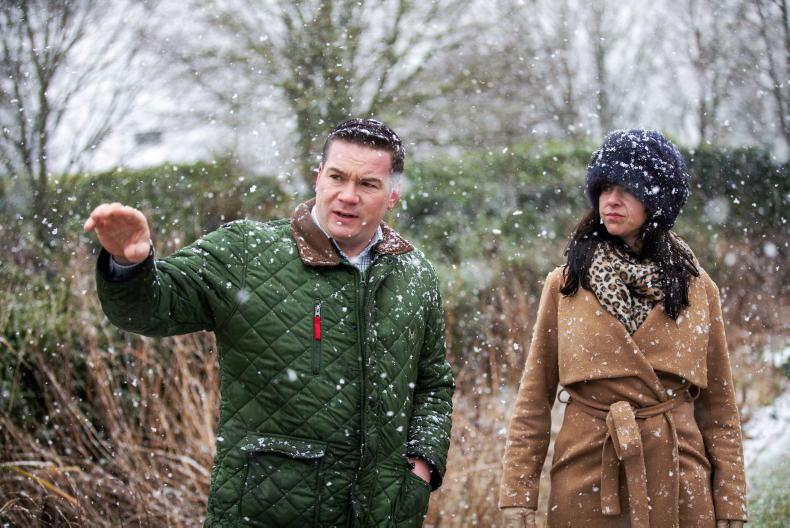
Dan O'Neill explains to Amii McKeever the flight path of the owls in the Mount Juliet's grounds. Owls form an important element of the rewilding programme. \ Claire Nash
The first venture toward this rewilding programme was to put in bird boxes. These are pods of five boxes, all facing south, each a different colour. Each box has GPS coordinates as do the pheasant feeders and the pheasant pens.
“This is important because you need to know if they are successful. And if they’re not – move them,” he says of his maintenance planning.
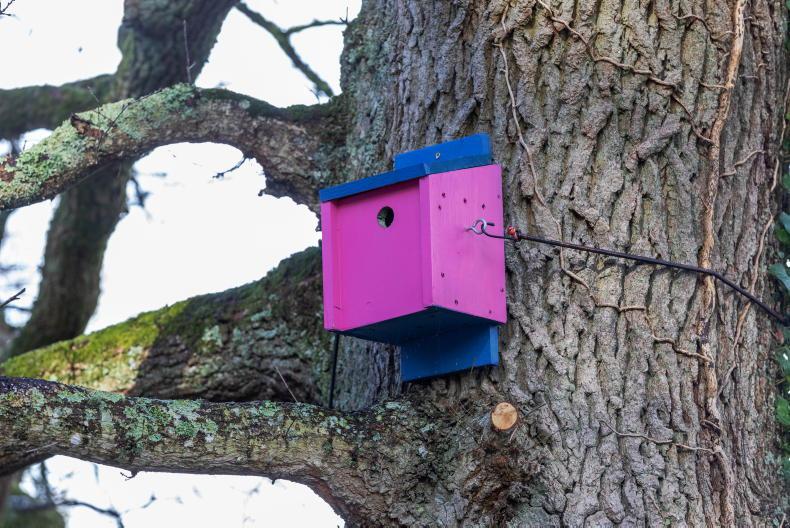
The meadows were not planted so everything, the wildflowers, are native. Dan thinks that the best part about the meadows is: “When you have kids, you go down to the meadow and just let them go. What’s going to happen? The grass is two feet tall, it’s like running around on a giant mattress.”

Mount Juliet under a dusting of snow in late February when Irish Country Living visited. \ Claire Nash
Dan credits the estate general manager Mark Dunne with support, but also acknowledges that by challenging him, he made sure that the plan was sustainable. Dan – to get a response to Mark’s question, “Why would we do it?”– went to Jimmy Conroy a National Parks and Wildlife (NPWS) ranger.
Speaking to Jimmy on numerous occasions helped Dan with his planning; learning how to build bird boxes properly and he even told him about the pheasants. “It had to be sustainable going forward, not just letting pheasants go or putting a bird box in the wrong place”.
As to why do it from his own point of view, he said: “When I go to a different country, the first thing I want to know about is the wildlife.

Pheasant feed is either wheat or a maize. \ Claire Nash
“And it doesn’t matter if it’s the most common bird in the area. It’s something that I haven’t seen. I want to see it, understand it and learn about it.
“There’s woodpeckers here and an array of small birds, every type of finch. The woodpecker... Sometimes you hear him knocking and it’s amazing to hear,” Dan concluded.

Dan O’Neill has been working in Mount Juliet since he was a teenager, starting out as a linen porter before becoming a ghillie (fishing guide) on the river. \ Claire Nash
Read more
How do Irish farms stack up for biodiversity?
Over 7,000 native trees planted in Co Clare pilot project
The sight of alligators on Florida golf courses will be familiar to avid golf watchers, the native fauna distinctive to the estate.
The aim of the Mount Juliet Estate ghillie (fishing guide), Dan O’Neill, is for international watchers to see Irish fauna – specifically pheasants – walking up the 18th when the Irish Open is played for the second year running at the Kilkenny venue in July.
“As long as he doesn’t have a golf ball in his beak”; Dan laughs.

Golf cart is the only way to travel in the world renowned Mount Juliet Estate which will again host the 2022 Irish Open. \ Claire Nash
Dan O’Neill has been working in Mount Juliet since he was a teenager, starting out as a linen porter before becoming a ghillie on the river. Flight patterns, he explains, that work on the River Nore may not work on the River Barrow. And when someone doesn’t have any experience on a river, they hire a ghillie to assist them.

How he came to this role was quite by chance, he tells me: “When I was linen porter, I was coming up the stairs in the main house and someone had dropped a bloody butcher (a fly). This was the type of fly I caught my first trout on. So I brought it to Matt Bolger who was the fishing manager at the time. I told him it was a bloody butcher and I found it on the stairs and he asked me how I came to know what it was. I explained that I fished with my dad and two days later he asked would I be interested in guiding. I said, ‘Yeah, I’ll give it a go.’ So I went out and started guiding and now I’m here talking to you.”
An old oak tree on which an owl box is mounted is our first stop.

Dan O'Neill is spearheading the Mount Juliet rewilding programme \ Claire Nash
“Here on the outskirts of Walton’s Grove woods is the perfect location for the box as the owls use the woods and the paths for their circle. Some people put them inside the woods, but they’ll inhabit one quicker here. You can see them really early in the morning come around that path, hunting along the treeline,” Dan says.

Robins and other bird species are supported as part of the rewilding programme. \ Claire Nash
Reintroducing pheasants
Pheasants are a woodland bird and have always been in Mount Juliet, but Dan says that this is a conservation exercise and – although he is often asked – they are not starting to shoot again.

One hundred pheasants split over three pens in three different areas of the estate will be established in 2022, 80 hens and 20 cock pheasants. Dan explains that they will let the hens out first to establish themselves in the habitat and then the cocks should stick around. Hopefully down the line they will breed, he envisages. 
Dan tells us that the day before our visit, as he was feeding the pheasants a guest came down with his daughter. She saw pheasants for the first time and was absolutely fascinated by them, particularly the crowing, having never heard this sound before. The little girl returned four times before checking out.
For Dan, it is the children that are the real focus of this project. The estate has a kids club and he wants to get kids more involved with wildlife.

Young children ride through the Mount Juliet grounds. \ Claire Nash
“My plan is that the kids will make their own suet blocks with grain. We will go out and put them around the area. Not every kid lives in the countryside, so it’s nice to be able to give them the chance and a place to do that. When you plant a seed like that with a child, you never know where it is going to end up.”

The bird boxes have their GPS co-ordinates recorded as part of the programme. \ Claire Nash
Conservation
The estate has two and a half miles of fishing on the River Nore, famous for its brown trout.
“In minding that, we have to take into consideration the wildlife. We maintain the banks but we don’t manicure them too heavily, as If you do, the fly life can’t live. The trout, they are not fed by me, they are fed by the wildlife.”

Dan O'Neill explains to Amii McKeever the flight path of the owls in the Mount Juliet's grounds. Owls form an important element of the rewilding programme. \ Claire Nash
The first venture toward this rewilding programme was to put in bird boxes. These are pods of five boxes, all facing south, each a different colour. Each box has GPS coordinates as do the pheasant feeders and the pheasant pens.
“This is important because you need to know if they are successful. And if they’re not – move them,” he says of his maintenance planning.

The meadows were not planted so everything, the wildflowers, are native. Dan thinks that the best part about the meadows is: “When you have kids, you go down to the meadow and just let them go. What’s going to happen? The grass is two feet tall, it’s like running around on a giant mattress.”

Mount Juliet under a dusting of snow in late February when Irish Country Living visited. \ Claire Nash
Dan credits the estate general manager Mark Dunne with support, but also acknowledges that by challenging him, he made sure that the plan was sustainable. Dan – to get a response to Mark’s question, “Why would we do it?”– went to Jimmy Conroy a National Parks and Wildlife (NPWS) ranger.
Speaking to Jimmy on numerous occasions helped Dan with his planning; learning how to build bird boxes properly and he even told him about the pheasants. “It had to be sustainable going forward, not just letting pheasants go or putting a bird box in the wrong place”.
As to why do it from his own point of view, he said: “When I go to a different country, the first thing I want to know about is the wildlife.

Pheasant feed is either wheat or a maize. \ Claire Nash
“And it doesn’t matter if it’s the most common bird in the area. It’s something that I haven’t seen. I want to see it, understand it and learn about it.
“There’s woodpeckers here and an array of small birds, every type of finch. The woodpecker... Sometimes you hear him knocking and it’s amazing to hear,” Dan concluded.

Dan O’Neill has been working in Mount Juliet since he was a teenager, starting out as a linen porter before becoming a ghillie (fishing guide) on the river. \ Claire Nash
Read more
How do Irish farms stack up for biodiversity?
Over 7,000 native trees planted in Co Clare pilot project



















 This is a subscriber-only article
This is a subscriber-only article










SHARING OPTIONS: